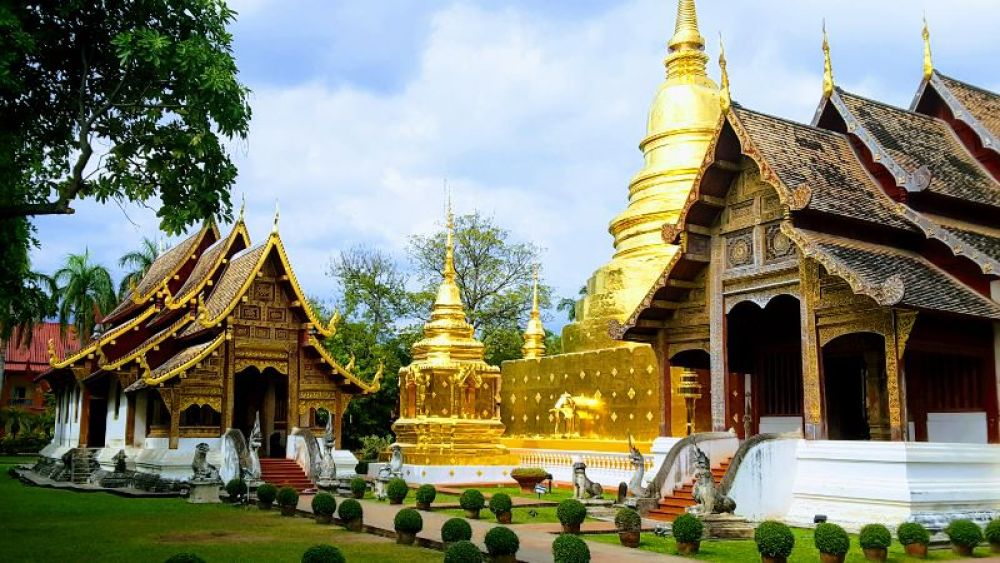

Located within the old city walls of Chiang Mai, Wat Phra Singh stands as one of the most revered temples in northern Thailand. Its history dates back to the 14th century when King Pha Yu of the Lanna Kingdom constructed it in honor of his father, King Kham Fu. Over the years, the temple has seen numerous renovations and additions, including the assembly hall (viharn) that houses the Phra Singh Buddha, a highly sacred Buddha image that gives the temple its name.
The temple's architecture, adorned with Lanna-style roofs and intricate wood carvings, attracts history enthusiasts and spiritual seekers. It is also a center for Buddhist education and a repository of ancient manuscripts, contributing further to its historical importance.
From the mid-20th century onwards, the allure of Chiang Mai's rich culture and tranquil landscapes began to captivate visitors from around the globe. Wat Phra Singh, with its spiritual significance and artistic heritage, became a must-visit destination for tourists seeking to experience the essence of Lanna culture.
The tourism industry in Chiang Mai saw substantial growth during the late 20th century, with travelers drawn to the city's wide range of cultural landmarks, Wat Phra Singh being a standout. Its inclusion on city tours and as a point of interest in guidebooks helped Wat Phra Singh secure its place as a top attraction in Chiang Mai.
In recent years, sustainable tourism practices have become vital, and Chiang Mai has responded by integrating these values into its tourism strategy. Wat Phra Singh has embraced this trend by offering an authentic cultural experience while ensuring the preservation of the temple's historical integrity.
Tourists can participate in mindfulness and meditation retreats, interact with monks during alms-giving ceremonies, and engage in temple maintenance activities. The rise of digital media has also allowed virtual tours of Wat Phra Singh, expanding its reach to international audiences who might plan to visit in the future.
With a focus on cultural education, Wat Phra Singh continues to be a venue where visitors can learn about Buddhism, Lanna art, and traditional Thai meditation practices. These elements of engagement reflect the changing dynamics of tourism, where immersive learning experiences are highly cherished.
Wat Phra Singh is open to the public year-round, and visitors are advised to dress respectfully when entering the temple grounds. As it is a place of worship, travelers should be prepared to observe traditional etiquette, including removing shoes before entering certain buildings and avoiding inappropriate behavior.
The temple is particularly lively during annual festivals such as Songkran and Loy Krathong, where traditional rituals and community events take center stage. This presents an excellent opportunity for tourists to witness religious ceremonies and participate in local customs.